There’s something peaceful and magical about waking up to the sound of birdsong in your backyard. Birds bring color, movement, and life to your garden, while also helping control pests, pollinate plants, and support your local ecosystem. Creating a bird-friendly backyard garden isn’t difficult — and with a little planning, you can turn your outdoor space into a thriving haven for birds of all kinds.
In this complete guide, you’ll learn how to attract a variety of beautiful birds to your garden using the right plants, feeders, water sources, and natural shelters. Whether you have a spacious yard or a small balcony garden, these tips will help you build a welcoming environment for your feathered visitors.
Why Create a Bird-Friendly Garden?

Attracting birds isn’t just about enjoying their beauty and songs. It also benefits your garden and the environment in many ways:
- Pest control: Many bird species feed on insects like caterpillars, aphids, and mosquitoes.
- Pollination: Some birds help pollinate flowers while feeding on nectar.
- Seed dispersal: Birds spread seeds, helping plants propagate naturally.
- Environmental balance: Supporting native bird species strengthens the local ecosystem.
A bird-friendly garden also provides a serene, natural escape from daily stress.
Essentials for Attracting Birds to Your Garden
To turn your backyard into a bird paradise, you’ll need to provide the three essentials every bird looks for:
- Food
- Water
- Shelter
Here’s how to do it right:
1. Plant Native, Bird-Friendly Plants
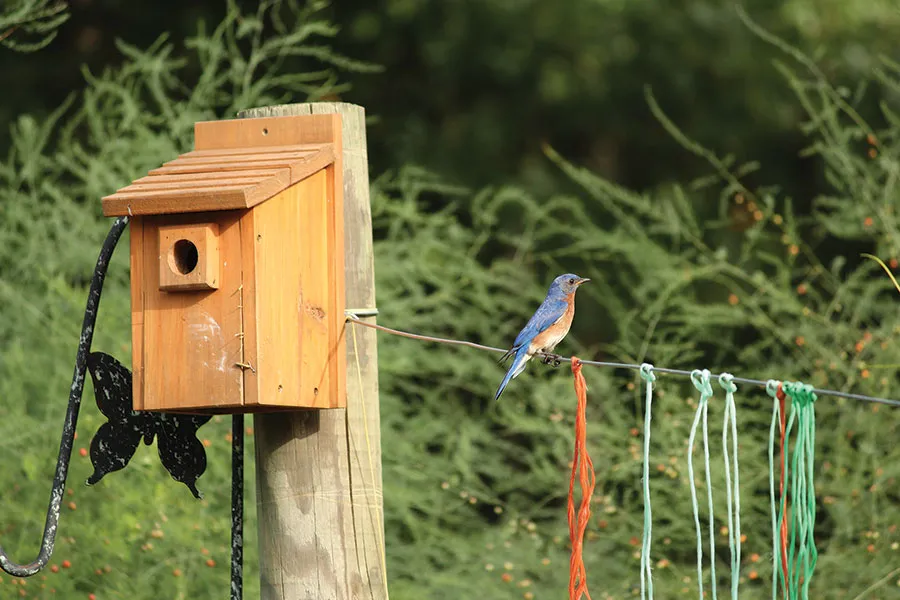
Plants offer food, shelter, and nesting spots for birds. Native species are especially important as they’re adapted to local conditions and preferred by native birds.
Best Plants for a Bird-Friendly Garden:
- Berry-producing shrubs: Mulberry, Serviceberry, Elderberry
- Flowering plants for nectar: Sunflowers, Bee Balm, Zinnias, Salvias
- Seed-producing plants: Coneflowers, Black-eyed Susans, Daisies
- Dense shrubs for cover: Viburnum, Privet, Indian Hawthorn
- Trees for perching and nesting: Oak, Maple, Pine, Cedar
Tip: Plant in layers — trees, tall shrubs, smaller bushes, and ground covers — to mimic a natural habitat and attract different bird species.
2. Provide Reliable Food Sources
In addition to natural plant-based food, supplement your garden with feeders to attract more birds.
Types of Bird Feeders:
- Seed feeders: Great for finches, cardinals, chickadees.
- Nectar feeders: Attract hummingbirds and sunbirds.
- Suet feeders: Perfect for woodpeckers and wrens.
- Platform feeders: Ideal for larger birds like doves and jays.
Best Bird Foods:
- Black oil sunflower seeds
- Millet
- Nyjer (thistle) seeds
- Cracked corn
- Peanuts (unsalted)
- Mealworms
- Suet cakes (in winter)
Tip: Place feeders in safe, quiet spots with nearby shelter like trees or shrubs for birds to retreat.
3. Offer Clean, Fresh Water

Birds need water for drinking and bathing, especially during hot, dry weather.
DIY Bird Water Ideas:
- Classic birdbaths
- Shallow dishes or trays filled with water
- Hanging water bowls
- Garden fountains with gentle water flow
Maintenance Tips:
- Clean and refill water sources daily.
- Place water in shaded areas.
- Add small pebbles for perching.
A moving water feature like a fountain or dripper attracts even more birds with the sound of trickling water.
4. Provide Safe Shelter and Nesting Spots
Birds need protection from predators, harsh weather, and a quiet place to raise their young.
Natural Shelters:
- Dense shrubs and hedges
- Leafy trees with broad canopies
- Climbing vines on trellises or walls
Install Nesting Boxes:
- Choose designs suitable for local species.
- Place boxes at varying heights, from 6 to 20 feet.
- Keep away from busy areas and predators.
- Clean boxes yearly to prevent disease.
Pro Tip: Leave dead trees (snags) if safe, as they offer natural nesting cavities for woodpeckers and owls.
5. Avoid Chemicals and Pesticides
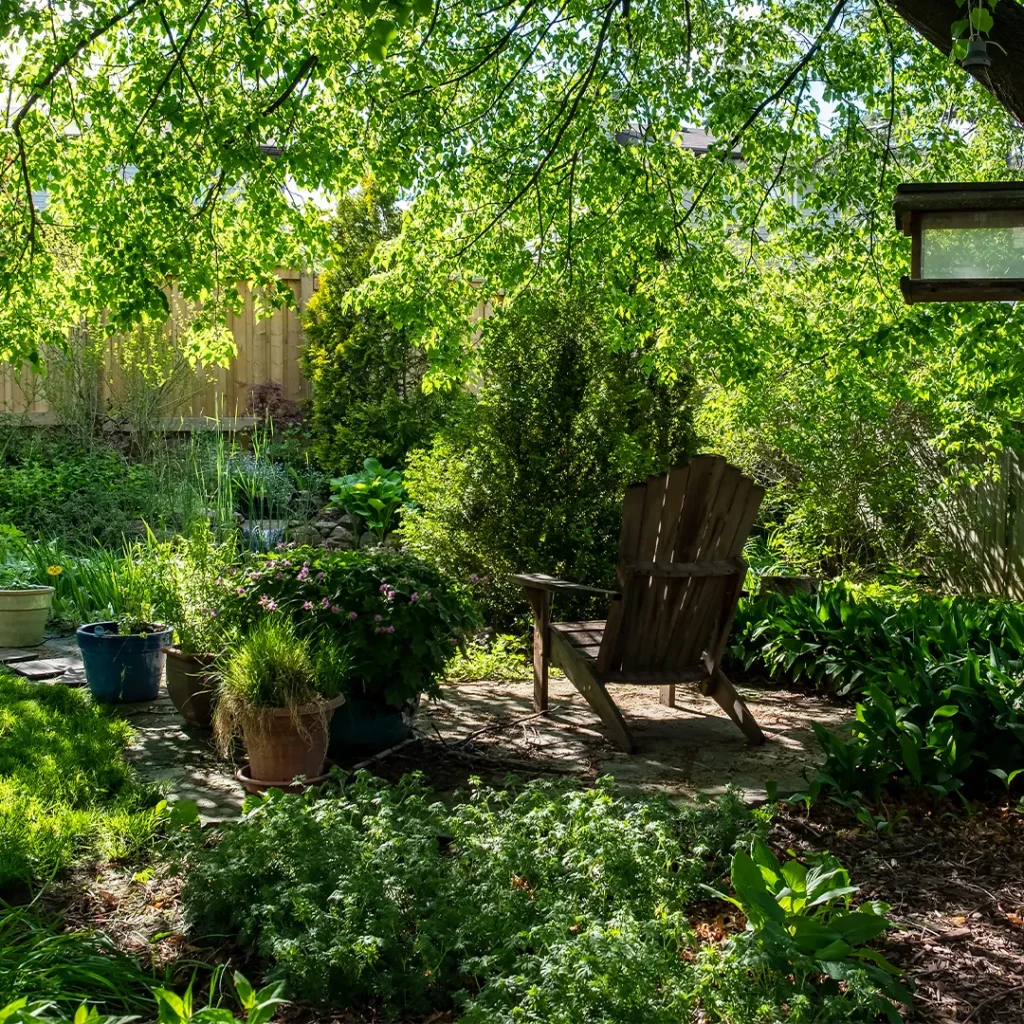
Many pesticides and chemical fertilizers harm birds directly or by eliminating the insects they depend on for food.
Eco-friendly alternatives:
- Organic compost for soil enrichment.
- Natural pest control like neem oil or soapy water sprays.
- Encourage beneficial insects like ladybugs and lacewings.
The more natural your garden, the safer and more appealing it becomes for birds.
6. Grow Bird-Friendly Plants Year-Round
Ensure your garden has food and shelter available through every season.
Seasonal Planting Guide:
- Spring: Wildflowers, Sunflowers, Dogwood
- Summer: Coneflowers, Zinnias, Mulberries
- Fall: Asters, Goldenrod, Serviceberries
- Winter: Holly, Crabapples, Winterberry
Evergreen shrubs and trees provide essential cover in colder months when deciduous plants shed leaves.
7. Keep Cats Indoors
Domestic cats are among the biggest threats to backyard birds. Even well-fed pets instinctively hunt.
Solutions:
- Keep cats indoors or supervise outdoor time.
- Install a “catio” (enclosed outdoor space).
- Place bird feeders and baths in areas cats can’t reach.
8. Leave Natural Debris
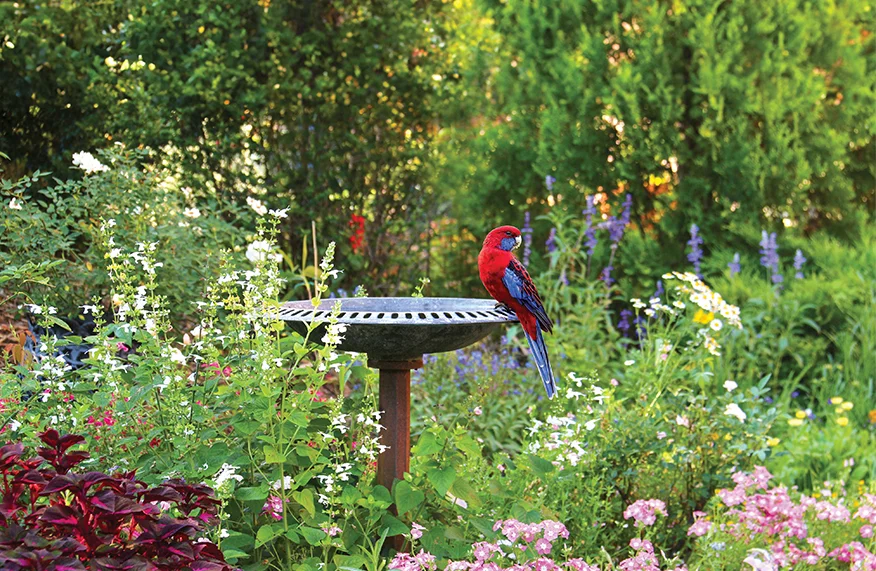
Leaving fallen leaves, dead branches, and leaf litter helps ground-feeding birds like thrushes and sparrows find insects and nesting material.
Benefits:
- Attracts insects — an important food source.
- Provides natural materials for nests.
- Offers cover for shy bird species.
Bonus: Fun Bird Garden Ideas
- Plant a mini wildflower meadow: Even a small patch attracts pollinators and insect-eating birds.
- Add a vertical garden: Great for small spaces, and birds love foraging in vertical nooks.
- Build a natural brush pile: Stack twigs and branches for ground-feeding bird shelter.
- Create a garden journal: Track which bird species visit and when.
Final Thoughts
Creating a bird-friendly backyard garden is one of the most rewarding and eco-conscious projects you can undertake. With a few thoughtful changes — adding native plants, reliable food, fresh water, and safe nesting spots — you’ll transform your outdoor space into a thriving sanctuary for local birdlife.
Not only will you enjoy the beauty, songs, and liveliness of your feathered visitors, but you’ll also be contributing to biodiversity and healthier local ecosystems.
So grab your gardening gloves, fill those feeders, plant a few berry shrubs, and get ready to welcome the wonderful world of backyard birds!

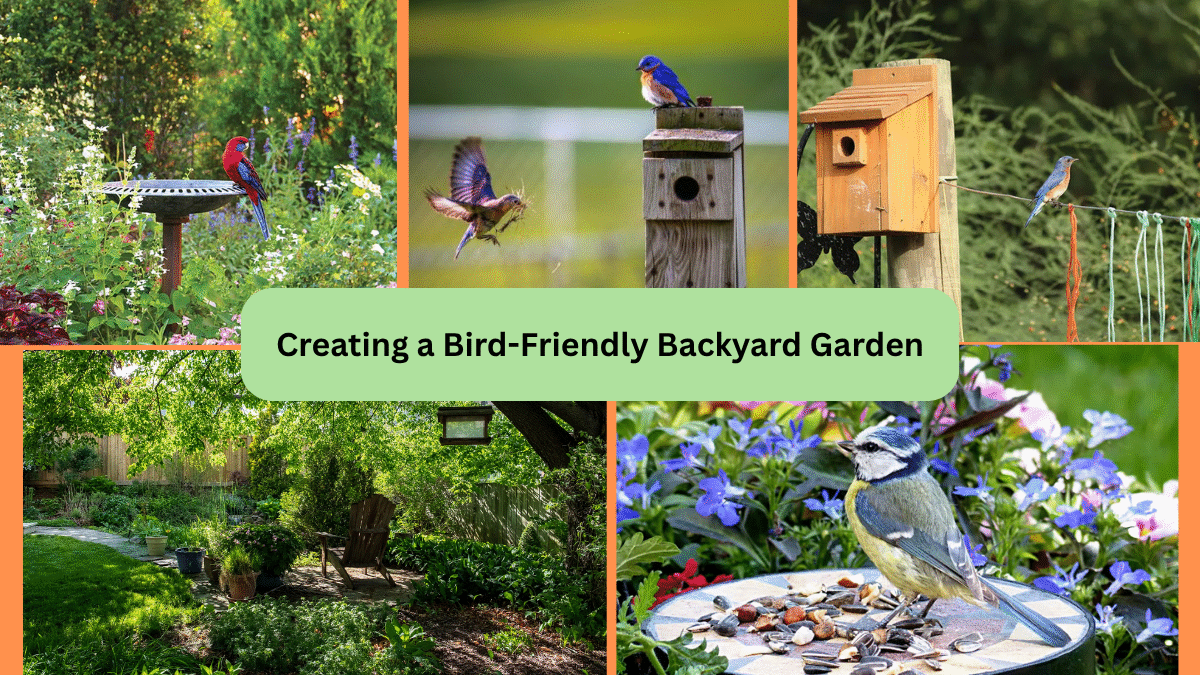

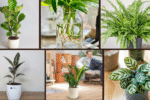

Leave A Comment